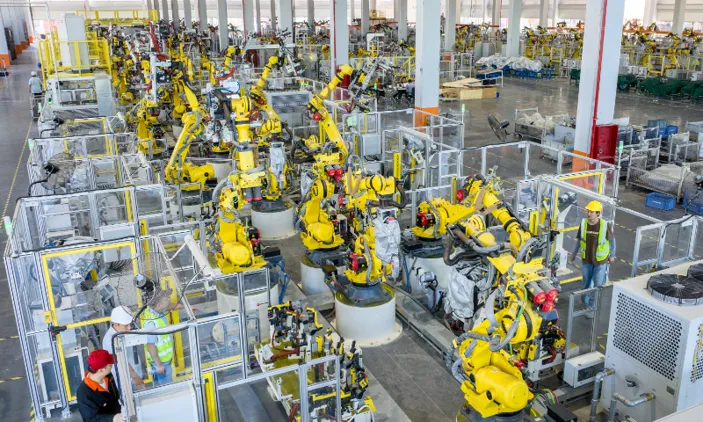China's Manufacturing PMI Drops in July Due to Off-Season Rain

China's manufacturing purchasing managers' index (PMI) for July registered at 49.3, a decline of 0.4 points compared to the previous month. This decrease was attributed to several factors including the traditional off-season for manufacturing, extreme high temperatures, and heavy rainfall and flooding affecting various regions. Zhao Qinghe, a statistician from the National Bureau of Statistics, highlighted these adverse conditions as significant contributors to the PMI's drop.
A PMI reading above 50 typically indicates an expansion in manufacturing activity, while a score below this threshold signifies a contraction in the sector. Despite the overall decline in the PMI, Zhao noted that manufacturing production activity showed resilience, with the sub-index for production reaching 50.5. Additionally, the new orders index stood at 49.4.
Specific industries such as railway, shipbuilding, aerospace equipment, and computer and communication equipment witnessed continued expansion, with both production and demand remaining robust. The PMI figures for equipment manufacturing and high-tech industries were notably strong, at 50.3 and 50.6 respectively, reflecting a healthy growth trajectory in these high-end manufacturing sectors.
Conversely, the consumer goods manufacturing PMI fell to 49.5, representing a decline of 0.9 points from June. This shift highlights the varied performance across different manufacturing segments during the month.
The business activity expectation index, which serves as a gauge of future confidence among manufacturers, reached 52.6 in July, an increase of 0.6 points from the previous month. This uptick suggests that manufacturers are becoming increasingly optimistic about recent market developments, with several sectors, including automobiles and railway, reporting indices at or above 55.0.
In the non-manufacturing sector, the PMI settled at 50.1, down 0.4 points from June but still maintaining an expansionary stance. Industries related to travel and consumption, such as railway and air transportation, along with postal services, reported impressive business activity indices above 60.0, indicating rapid growth.
Other service sectors, including leasing, ecological protection, and public utilities, also exhibited growth, while the tourism sector specifically demonstrated dynamic activity. However, the real estate and residential services industries revealed challenges, with indices slipping below the critical threshold.
Looking ahead, the business activity expectation index for the service sector observed an encouraging rise to 56.6, suggesting optimism among service industry enterprises regarding future market conditions.
Nevertheless, adverse weather conditions, characterized by prolonged high temperatures and significant rainfall, have contributed to a slowdown in construction activities, with the construction index decreasing to 50.6, down 2.2 points from last month.
Overall, China’s composite PMI for July stood at 50.2, reflecting a decrease of 0.5 points from the previous month. This figure remains above the critical threshold, indicating that despite the recent challenges, business production and operational activities across the country continue to expand.
This assessment, as provided by Zhao, underscores the mixed signals within the manufacturing and non-manufacturing landscape in China, illustrating both resilience and the areas requiring attention in the broader economic context.
Read These Next

China New City Group Pursues Digital Transformation Amid Challenges
China New City Group Limited is engaging in a digital transformation initiative by joining the Hong Kong Real World Assets Global Industry Alliance, addressing valuation issues in the market while embracing technology in real estate and finance.

China Manufacturing PMI Drops to 49.3 in July
China's July manufacturing PMI fell to 49.3, down 0.4 points, indicating contraction and challenges in the sector.

Liquidity Management Insights from Annual Report
Analysis of the company's annual report emphasizing strategic financing moves, market conditions, and potential risks.
